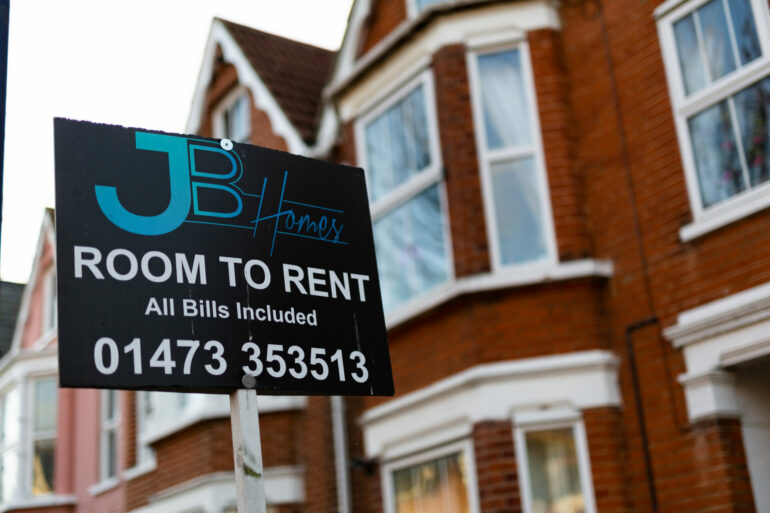The latest Rental Market report from Zoopla found the UK rental boom ended after average rents for new lets rose by just 2.8% in the 12 months to April 2025.
This was less than half the growth seen a year ago and the slowest rise since July 2021.
The average monthly rent stood at £1,287, up £35 over the year.
Rents rose more slowly across all regions, with Yorkshire and the Humber seeing growth drop to 1.1%, down from 6.4% in 2024.
This was led by slower rises in university cities such as Sheffield (1.9%), Bradford (1.4%) and Leeds (-1.5%). Growth in the North East slowed to 5.2%, down from 9.4% the previous year.
In Scotland, growth fell from 9.1% to 2.4% after rent controls were removed.
Dundee saw rents fall by 2.1%.
In London, rents fell in some inner areas like NW London (-0.2%) and WC London (-0.6%).
Overall, London rents went up by 1.5% to an average of £2,175.
Rents increased fastest in more affordable areas near large cities, including Wigan (8.8%), Carlisle (8.8%) and Chester (8.2%).
The number of areas with rent growth above 8% dropped from 52 a year ago to five.
Over the last three years, rents have grown five times faster than house prices.
Since 2022, average UK rents for new tenancies have risen by 21%, while house prices are up 4%.
Monthly rents have increased by £219, about the same as the rise in average mortgage repayments.
Annual UK rents are up by £2,650 since 2022, from £12,800 to £15,450.
Additionally, data showed that rental demand was 16% lower over the last year, but still 60% above pre-pandemic levels.
Lower migration for work and study into the UK and a 50% drop in long-term net migration in 2024 were key factors.
Supply of rental homes remains 20% below pre-pandemic levels, though it is 17% higher than last year.
Less investment from private and corporate landlords has limited growth in the private rented sector.
Zoopla expects UK rents to rise by a further 3-4% over the rest of 2025.
Richard Donnell, executive director of research at Zoopla, said: “Rents rising at their lowest level for four years will be welcome news for renters across the country.
“The average annual cost of renting is over £2,500 a year higher than three years ago, the same as the increase in average mortgage repayments for home owners.
“While demand for rented homes has been cooling, it remains well above pre-pandemic levels sustaining continued competition for rented homes and a steady upward pressure on rents.”
Donnell added: “The pressures are particularly acute for lower to middle incomes with little hope of buying a home and where moving home can trigger much higher rental costs.
“The rental market desperately needs increased investment in rental supply across both the private and social housing sectors to boost choice and ease the cost of living pressures on the UK’s renters.”
Adam Jennings, head of lettings at Chestertons, said: “Overall, the UK’s rental market remains highly competitive as a growing population results in a continuous requirement for suitable housing.
“Whilst some areas of the UK may have witnessed an adjustment in supply or demand levels as well as rental inflation, the majority of cities and particularly London, still see a single property attract several tenant enquiries.
“Despite occasional market fluctuations, demand will likely always outweigh supply which can result in a challenging property search for tenants.”
Jennings added: “In fact, based on 2025 market trends this summer may be the most competitive we have seen for many years.
“To stay ahead of the competition, tenants are advised to start their property search as early as possible but also establish what they might be prepared to compromise on whether that’s price, location or the size of the property.”
Angharad Trueman, president of ARLA Propertymark, said: “It’s interesting to see that rent growth has slowed year on year.
“This is more than likely down to rent levels reaching their peak in many places across the UK, as they have been rising to unrealistic levels for years.
“From the outside looking in, it may look as though landlords and their greed are at the heart of this problem, however, this is not the case.”
Trueman added: “A significant number of landlords face increased costs across the board, from continuous legislative hurdles, tax hikes, and mortgage increases, many are struggling to break even on their costs.
“Crucially, the fundamental pressures and reasons for these rises remain.
“The bombardment and penalisation of landlords is pushing many to leave the market altogether or prohibit new investors from entering, which is creating an ever-growing undersupply of private rented homes against a backdrop of increasing demand from renters.
“It’s crucial that support is available and incentives are introduced for investment moving forward in order to make private rented housing more affordable in the long term.”The latest Rental Market report from Zoopla found the UK rental boom ended after average rents for new lets rose by just 2.8% in the 12 months to April 2025.
This was less than half the growth seen a year ago and the slowest rise since July 2021.
The average monthly rent stood at £1,287, up £35 over the year.
Rents rose more slowly across all regions, with Yorkshire and the Humber seeing growth drop to 1.1%, down from 6.4% in 2024.
This was led by slower rises in university cities such as Sheffield (1.9%), Bradford (1.4%) and Leeds (-1.5%). Growth in the North East slowed to 5.2%, down from 9.4% the previous year.
In Scotland, growth fell from 9.1% to 2.4% after rent controls were removed.
Dundee saw rents fall by 2.1%.
In London, rents fell in some inner areas like NW London (-0.2%) and WC London (-0.6%).
Overall, London rents went up by 1.5% to an average of £2,175.
Rents increased fastest in more affordable areas near large cities, including Wigan (8.8%), Carlisle (8.8%) and Chester (8.2%).
The number of areas with rent growth above 8% dropped from 52 a year ago to five.
Over the last three years, rents have grown five times faster than house prices.
Since 2022, average UK rents for new tenancies have risen by 21%, while house prices are up 4%.
Monthly rents have increased by £219, about the same as the rise in average mortgage repayments.
Annual UK rents are up by £2,650 since 2022, from £12,800 to £15,450.
Additionally, data showed that rental demand was 16% lower over the last year, but still 60% above pre-pandemic levels.
Lower migration for work and study into the UK and a 50% drop in long-term net migration in 2024 were key factors.
Supply of rental homes remains 20% below pre-pandemic levels, though it is 17% higher than last year.
Less investment from private and corporate landlords has limited growth in the private rented sector.
Zoopla expects UK rents to rise by a further 3-4% over the rest of 2025.
Richard Donnell, executive director of research at Zoopla, said: “Rents rising at their lowest level for four years will be welcome news for renters across the country.
“The average annual cost of renting is over £2,500 a year higher than three years ago, the same as the increase in average mortgage repayments for home owners.
“While demand for rented homes has been cooling, it remains well above pre-pandemic levels sustaining continued competition for rented homes and a steady upward pressure on rents.”
Donnell added: “The pressures are particularly acute for lower to middle incomes with little hope of buying a home and where moving home can trigger much higher rental costs.
“The rental market desperately needs increased investment in rental supply across both the private and social housing sectors to boost choice and ease the cost of living pressures on the UK’s renters.”
Adam Jennings, head of lettings at Chestertons, said: “Overall, the UK’s rental market remains highly competitive as a growing population results in a continuous requirement for suitable housing.
“Whilst some areas of the UK may have witnessed an adjustment in supply or demand levels as well as rental inflation, the majority of cities and particularly London, still see a single property attract several tenant enquiries.
“Despite occasional market fluctuations, demand will likely always outweigh supply which can result in a challenging property search for tenants.”
Jennings added: “In fact, based on 2025 market trends this summer may be the most competitive we have seen for many years.
“To stay ahead of the competition, tenants are advised to start their property search as early as possible but also establish what they might be prepared to compromise on whether that’s price, location or the size of the property.”
Angharad Trueman, president of ARLA Propertymark, said: “It’s interesting to see that rent growth has slowed year on year.
“This is more than likely down to rent levels reaching their peak in many places across the UK, as they have been rising to unrealistic levels for years.
“From the outside looking in, it may look as though landlords and their greed are at the heart of this problem, however, this is not the case.”
Trueman added: “A significant number of landlords face increased costs across the board, from continuous legislative hurdles, tax hikes, and mortgage increases, many are struggling to break even on their costs.
“Crucially, the fundamental pressures and reasons for these rises remain.
“The bombardment and penalisation of landlords is pushing many to leave the market altogether or prohibit new investors from entering, which is creating an ever-growing undersupply of private rented homes against a backdrop of increasing demand from renters.
“It’s crucial that support is available and incentives are introduced for investment moving forward in order to make private rented housing more affordable in the long term.”



